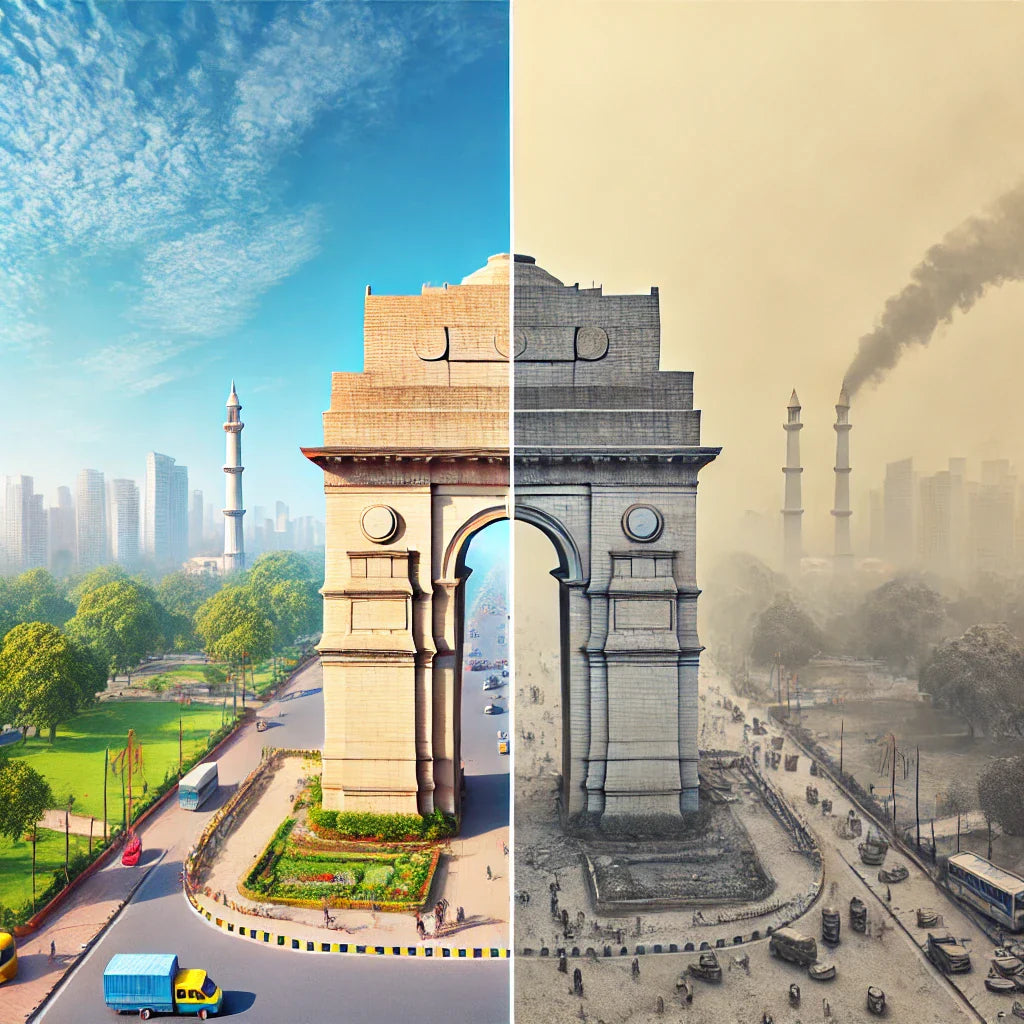When we think about carbon capture, large trees and dense forests are often seen as nature's champions. Their sheer size and biomass make them the "Goliath" of the natural world, capturing carbon dioxide (CO2) through photosynthesis.
But what if we told you that a much smaller, seemingly insignificant organism—algae—could be even more effective at capturing carbon? In this battle of carbon capture, algae are the David to the Goliath of trees, thanks to their unique photosynthetic ability and efficiency.
How Plants and Trees Capture Carbon
Plants and trees capture carbon through photosynthesis, the process by which chlorophyll absorbs sunlight to convert CO2 into oxygen and glucose. Trees store carbon in their biomass, and large forests act as carbon sinks, absorbing CO2 from the atmosphere and locking it away. This makes reforestation an attractive strategy in combating climate change.
However, there’s a catch: photosynthesis in trees only occurs in the surface area of the leaves, where chlorophyll is present. The larger structure of the tree—its trunk, branches, and roots—doesn't directly contribute to photosynthesis. This means that only a fraction of a tree’s overall biomass is actively capturing CO2. Moreover, trees take years or even decades to mature enough to absorb significant amounts of carbon, and they require vast amounts of land, water, and nutrients to grow effectively.
Algae: The Underdog of Carbon Capture
Now let’s introduce algae into the picture. Algae are tiny, single-celled microorganisms that thrive in aquatic environments. Unlike trees, where only the leaves capture carbon, the entire surface area of each algae cell contains chlorophyll, meaning the whole organism is involved in the photosynthetic process. This gives algae a distinct advantage over trees when it comes to carbon capture efficiency.
Why Algae Outperform Trees in Carbon Capture
-
Chlorophyll Distribution: In trees, only the leaves are responsible for photosynthesis, limiting their capacity to absorb CO2. Algae, on the other hand, have chlorophyll throughout their entire structure, maximizing their carbon-capturing potential. Every part of the algae cell is dedicated to photosynthesis, unlike trees, where a large portion of the biomass—roots, trunk, branches—serves other functions.
-
Faster Growth Rates: Algae grow and reproduce at an incredibly fast rate compared to trees. Some species of algae can double their biomass in just a few hours. This rapid growth enables algae to absorb more CO2 in a shorter period of time, making them much more efficient on a per-unit basis.
-
Photosynthetic Efficiency: Algae are more efficient at photosynthesis than land-based plants. In fact, certain species of algae can convert up to 90% of the CO2 they absorb into biomass, while trees typically convert only about 50–60%. This higher efficiency means algae process more carbon relative to their size and mass.
-
Minimal Land and Resource Requirements: Algae don’t need expansive tracts of land to grow. They can be cultivated in water tanks, ponds, or even bioreactors, making them suitable for areas where land is scarce. They also require fewer resources such as water and nutrients, making them a more sustainable option for carbon capture.
-
Resilience to Environmental Stress: Algae can thrive in a wide range of environments, from freshwater and saltwater to wastewater, making them highly adaptable. In contrast, trees are more susceptible to climate stressors such as drought, disease, and deforestation, all of which can hinder their carbon-capturing abilities
The Science Behind Algae’s Superior Carbon Capture
Algae’s efficiency in carbon capture lies in their biology. Because algae are single-celled organisms, every part of their structure is devoted to absorbing sunlight and CO2. With no complex systems like roots or woody trunks to maintain, algae can focus their energy entirely on growth and photosynthesis. This makes them incredibly efficient at converting CO2 into oxygen and organic matter.
A study published in Nature Communications (2020) found that algae can capture up to 400 times more carbon per unit area than trees. This efficiency stems from algae’s ability to rapidly photosynthesize and reproduce, continuously pulling CO2 from the atmosphere and turning it into biomass at a rate that trees simply can’t match.
How the greenwaterHOME Utilizes Algae for Carbon Capture
At Greenwater Scientific, we harness the power of algae’s carbon capture abilities in our greenwaterHOME air synthesizer. The greenwaterHOME uses algae-based technology to actively absorb CO2 from the air inside your home and convert it into fresh oxygen, improving your indoor air quality. Unlike traditional air purifiers, which merely filter out pollutants, the greenwaterHOME actually captures and reduces CO2 levels, creating a cleaner, healthier environment.
By leveraging algae’s superior photosynthetic efficiency, the greenwaterHOME not only purifies the air but also helps combat climate change on a small, domestic scale. In this David vs. Goliath story, algae prove that being small doesn’t mean being weak—in fact, they’re a mighty force in the fight against excess carbon.




Leave a comment
This site is protected by hCaptcha and the hCaptcha Privacy Policy and Terms of Service apply.